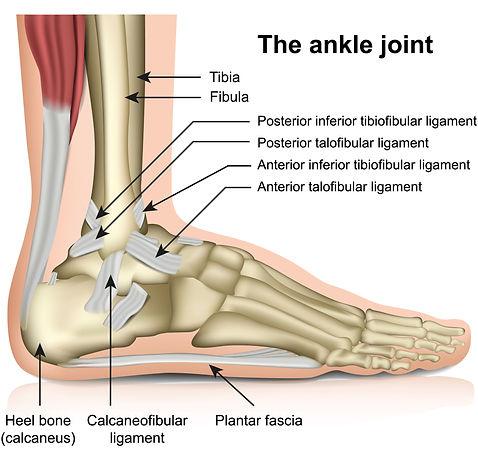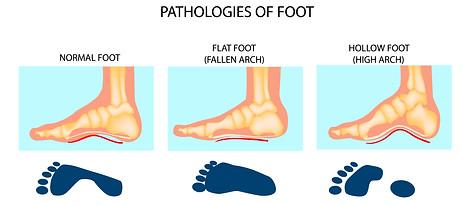Our feet are the foundation of our body. Each foot is a complex system of 26 bones, 33 bones, over 100 muscles, and a variety of tendons and ligaments that can become common sites for injuries. Unfortunately, the foot is a common site of pain/dysfunction that can lead to a wide variety of conditions. On an average day of walking 7,000 steps, a poor functioning or painful foot can lead to 3,500 faulty step patterns, which translate up the body. This compounding builds up throughout the years and can create chronic injuries anywhere in the body. Ankle and foot pain have many different origins and presentations and should always be evaluated by a medical professional.
SYMPTOMS
Pain | Tightness/Stiffness | Instability | Inner heel pain | Pain in back of heel | Arch pain | Toe Pain | Arch weakness | Numbness/Tingling | Radiation | Dull/Achy | Popping/Clicking | Muscle fatigue | Muscle spasm | Weakness | Burning | Loss of normal range of motion

CONDITIONS WE TREAT:
- Achilles Bursitis
- Achilles Tendon Rupture
- Ankle Instability
- Ankle Ligament Tear (ATFL, CFL, PTFL, Deltoid)
- Ankle Sprain (High and Low)
- Bunions
- Foot Osteoarthritis (Arthritis)
- Generalized Muscle Weakness
- Gout
- Hallux Valgus
- Hammer Toes
- Improper GAIT
- Medial Tibial Stress Syndrome (Shin Splints)
- Metatarsalgia
- Morton’s Neuroma
- Myofascial Pain Syndrome
- Non/Pre and Post-Surgical (Ankle Ligament, Achilles Tendon, Bunionectomy, Neurectomy)
- Pes Cavus (High Arch)
- Pes Planus (Flat Feet)
- Plantar Fasciitis
- Post Fracture Rehabilitation
- Sports Injuries
- Tarsal Tunnel Syndrome
- Tendinopathy (Achilles, Peroneal, Anterior/Posterior Tibialis, Flexor Hallucis Longus)

OUR DIFFERENCE:
Ankle and foot pain have many origins and presentations and can affect a patient in many different ways. The region of pain might not be the region that is causing your current issue. Our team of doctors evaluates each patient through a detailed history and comprehensive physical exam that includes a series of dynamic and static tests, postural exam, ankle stability tests, GAIT analysis, and examination of the lower or upper extremity movement patterns that trigger your symptoms. This thorough examination will allow us to identify what is causing your pain or dysfunction and begin working on an individualized treatment plan with corrective exercises that fits your exact needs.

